
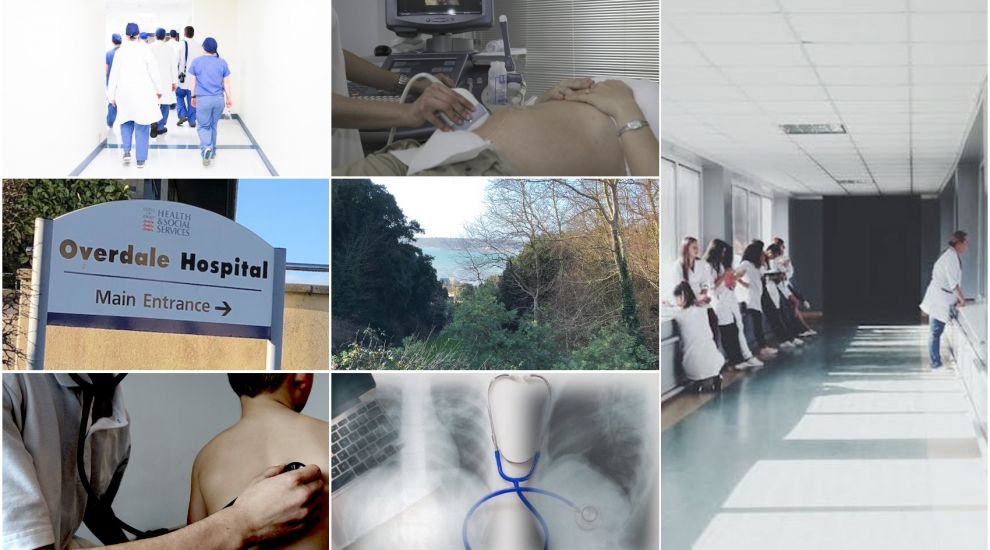

What facilities and services will be included in the new hospital? And which ones might be moved out into the community?
Express has taken a deep dive into the design specification documents drawn up by the hospital project team alongside clinicians, as well as the Jersey Care Model, which will underpin how healthcare looks in Jersey in future.
The latter is based around the idea of slashing hospital admissions for non-urgent cases and delivering more care in community settings. The Government claims this new model of healthcare, which States Members approved last year, will save £874m by 2036.
As a result, here's what a visit to the future hospital might look like, and which services could be taken out of a hospital context and provided in the community instead...
There’ll be two main entrances to the new hospital, each open 24/7: emergency access and a main entrance. Ambulances will arrive at a dedicated weather-proof entrance, which takes patients' privacy into concern, and has room for three ambulances to pull up at once.
For those arriving by car, the car park - currently planned for the field directly opposite the current Overdale site - should be no further than 500m away.
Returning to covid-style protocols, those requiring urgent care will now have one of two options: to attend the Emergency Department (ED) or the Urgent Treatment Centre (UTC).
Patients will have rapid access to multi-disciplinary experts within the unit, who will themselves have easy access to ultrasound, radiography and other services usually required by emergency practitioners.
A Primary Care-linked UTC – which was trialled at the current hospital during the early part of the pandemic - will be located nearby, with patients with more minor injuries and ailments directed for treatment there. It is the key concept linking the new hospital to the Jersey Care Model. The idea is to slash waiting times and reserve hospital beds for those in need of more complex care. The idea has already seen success in the Isle of Wight, where patients call 111 to book an appointment – just four months after introducing it in October 2019, the number of patients arriving at the ED seen within four hours rose by 4%.
Video: The Urgent Treatment Centre set up at the hospital during the earlier part of the pandemic.
The whole floor will operate on an ‘acute floor model concept’, which will see a significant amount of patients assess, diagnosed and treated then sent home with a care plan, diverted away from the department and reserving beds for those with more complex needs.
On the floor, there’ll be an ‘Acute Diagnostic Unit’ of 24-hour and 48-hour stay beds. The unit will help anyone referred by their GPs, following a telephone triage process. A section will be dedicated as an Older Persons Assessment Unit staffed by senior specialists. The aim of the unit will be to give them a care plan – not just for their urgent need, but going forward, to prevent future admission or deterioration.
Paediatric care will be kept separate as far as possible.
Once seen by a clinician, certain medical patients will be classified as “fit to sit” in a waiting area, reserving treatment spaces for new patients.
As currently, anyone suffering a medical or surgical emergency – such as brain injuries, severe burns or significant heart problems – that cannot be treated on site will be evacuated to Southampton, Oxford or Bournemouth depending on their need.
The Critical Care area (Intensive Care Unit and High Dependency) will be in close proximity to the Emergency Department for ease of access. The unit, which will provide intensive respiratory support and care for individuals with multi-organ failure, will have break-out spaces for loved ones to remain near.
For those not in an emergency, there’ll be a single front door to the hospital. It should be automatic and - like all other doorways in the hospital - be wide enough for bariatric patients.
The temperature-controlled area will be “themed in the manner and function of an airport lounge”, with a combination of dining areas supported by a coffee bar. There’ll also be a small section of retail – one being specifically health-related.
While it’s promised that the area will be clearly signposted with the lifts and stairs “easily identified and intuitively located”, there’ll be an ‘Enquiry Point’ for anyone in need of help. It will have a range of heights for people of all abilities to be able to access it, as well as special help for people with audiovisual impairments, such as hearing loops.
Private patients, however, will have their own drop-off and pick-up area and a “discreet, segregated route” into their own lounge.
Although the plan under the previous Future Hospital design was to have 100% ensuite rooms, the Our Hospital design has been developed around the idea of 128 generic inpatient beds, with 75% being single-occupancy with enough room to accommodate one patient and a visitor and 25% four-bed bays.
A full ward will have 26 beds, able to be chunked into smaller units. Single beds will be arranged in ‘nursing pods’ of four to six rooms, creating the feel of a multi-bedded bay.
There will be a Paediatric Ward, with Paediatric Assessment Unit sitting adjacent, consisting of exam and treatment rooms and therapeutic play. One area may become a designated space for teens and young adults.
The original Our Hospital concept design had suggested the wards would be ‘finger-like’, looking over Le Val André towards St. Aubin’s Bay, while Deputy Chief Minister Senator Lyndon Farnham, who has political responsibility for the hospital project, had spoken of “incredible sea views” as he urged States Members to vote for Overdale as the preferred site.
But such views won’t be accessible for all patients under current plans.
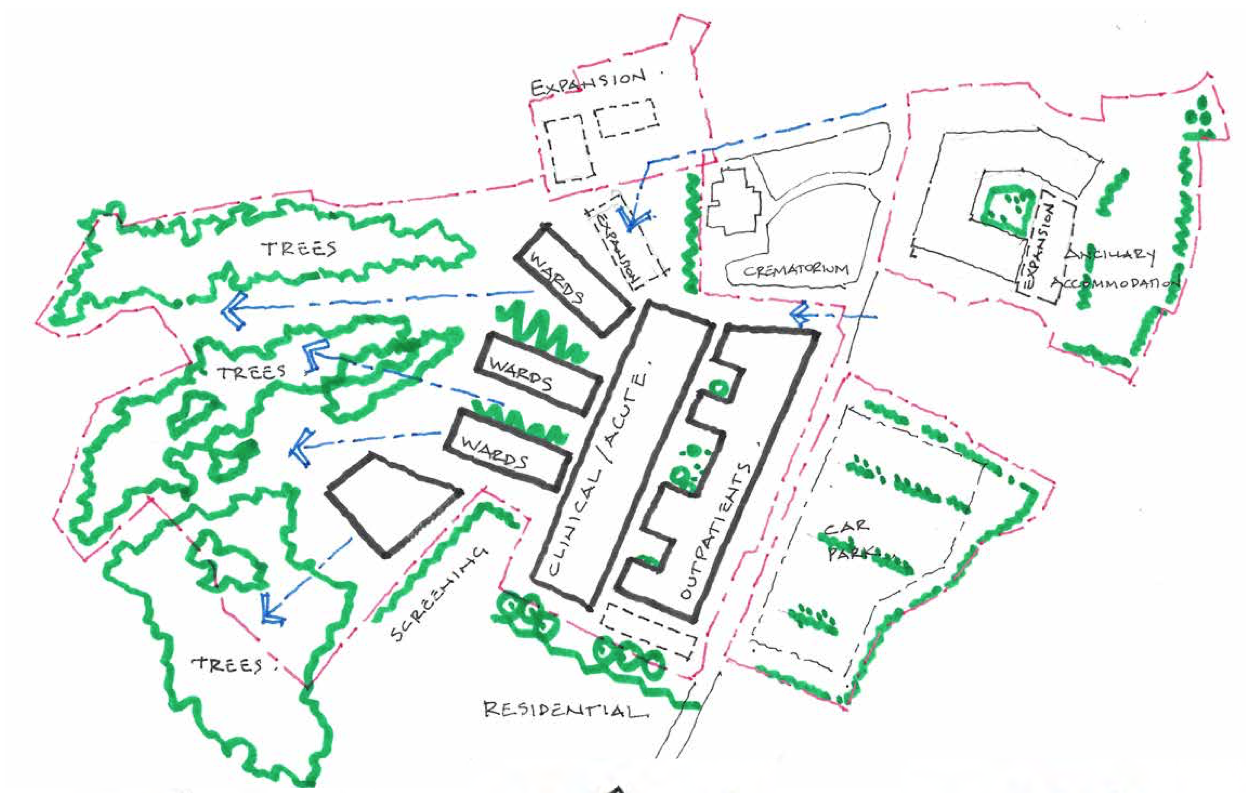
Pictured: The original Our Hospital concept design had suggested the wards would be ‘finger-like’, looking over Le Val André towards St. Aubin’s Bay.
As Express reported yesterday, designers are moving away from the “finger scheme”, while a document laying out the desired configuration of the hospital only guarantees “the best vista that the site can offer” to private inpatients and day surgery pods.
These rooms will be “finished to a high quality, first class hotel standard” and provided with a private bathroom with a shower.
It’s expected that the private patient facility could bring in up to £3m a year.
The Jersey Care Model also suggests that the island looks at providing “procedure packages” to offer to challenged UK health services as another way of generating income.
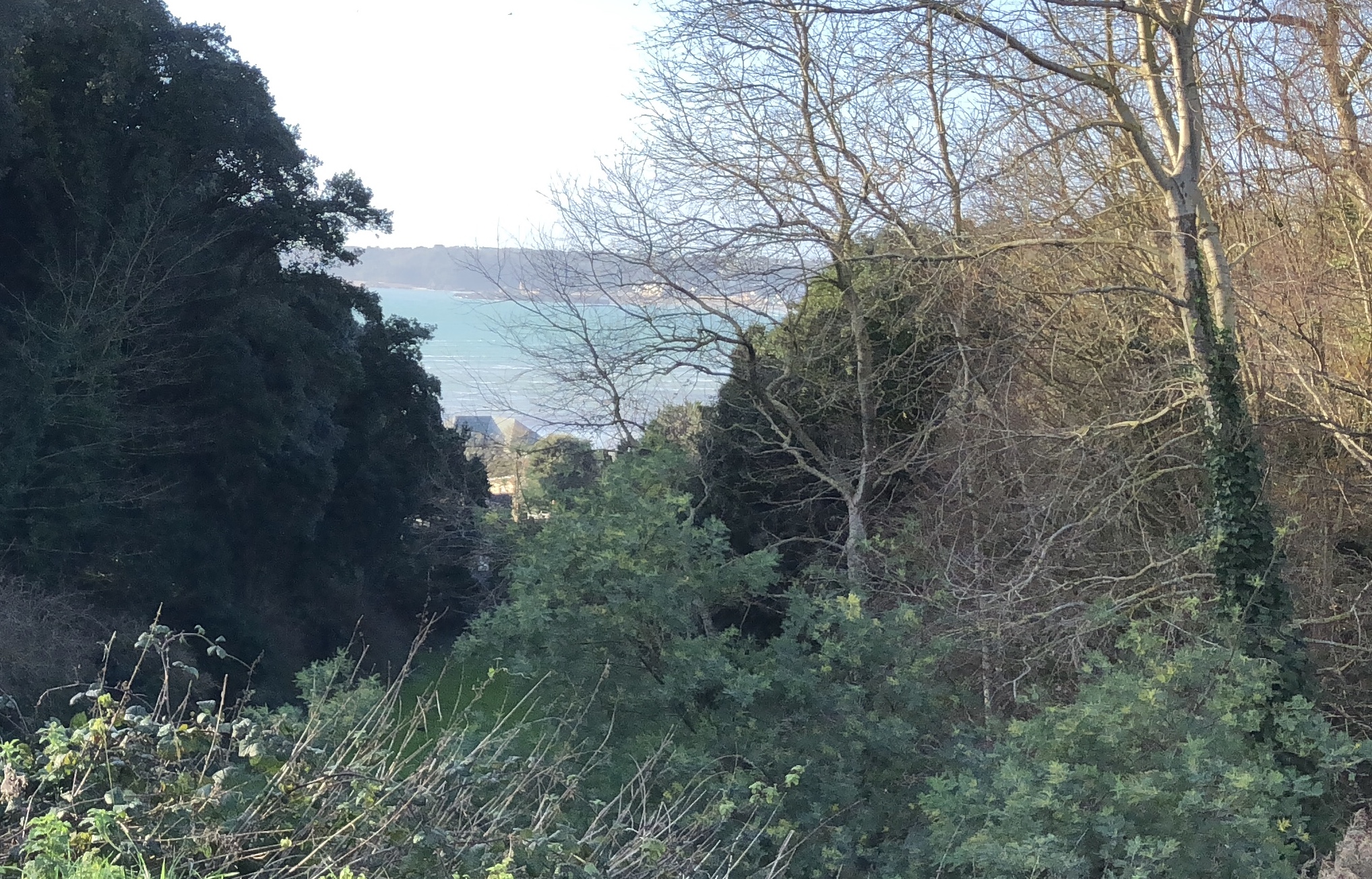
Pictured: Not all patients will be able to enjoy this view.
The hospital campus is expected to have 100% wifi coverage, while the design team is also considering integrating a free-to-view patient entertainment system, which will be able to connect with their own devices. The system should allow them to make catering choices digitally.
For many years, there have been calls to repatriate more cancer services back to Jersey to avoid sufferers having to travel off-island. In 2019 alone, 185 individuals had to travel to Southampton for radiotherapy and paediatric oncology.
A cancer strategy document laying out what services it might be feasible to repatriate was due for publication in November 2020, but is yet to emerge.
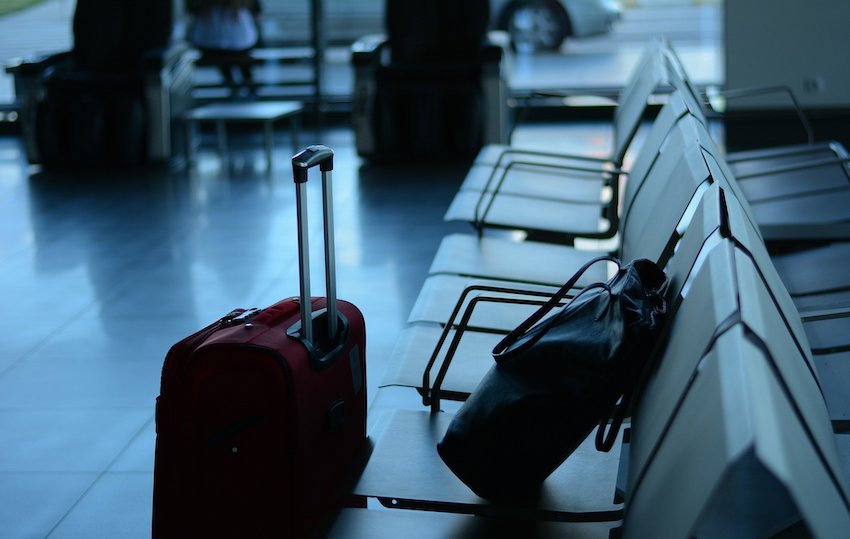
Pictured: Islanders will still have to travel for some cancer treatments.
The Functional Brief - the document laying out what is due to go in the new hospital - doesn’t hint at any specific services being brought back to Jersey, but does reference "closer working with Guernsey" as a solution. It also confirms that London’s Royal Marsden will be treated as a ‘satellite clinic’ for some oncology services.
An outpatient-based chemotherapy unit, with a treatment room for invasive procedures, and curtains able to be drawn for privacy will definitely be based at the new hospital. Patients will be able to make use of entertainment systems and will be able to enjoy snacks and beverages prepared on the unit and delivered by a dedicated staff member.
Under Jersey’s current mental health model, inpatients are split across a number of sites separate to the hospital, broadly split by age. Anyone presenting in crisis at the hospital’s A&E has previously been held there or kept in police custody until a referral to Orchard House can be made.
To account for this, a dedicated “place of safety” will be situated next to the ED, with multi-disciplinary team accommodation.
Over-18s requiring long-term inpatient care will reside in a new “homely non-institutional and welcoming” facility, which will consist of two wards with 30 beds split by gender and frailty. All rooms will be ensuite and “patients will be encouraged to personalise their rooms”, which will avoid fixtures and fittings that could be used to cause harm.
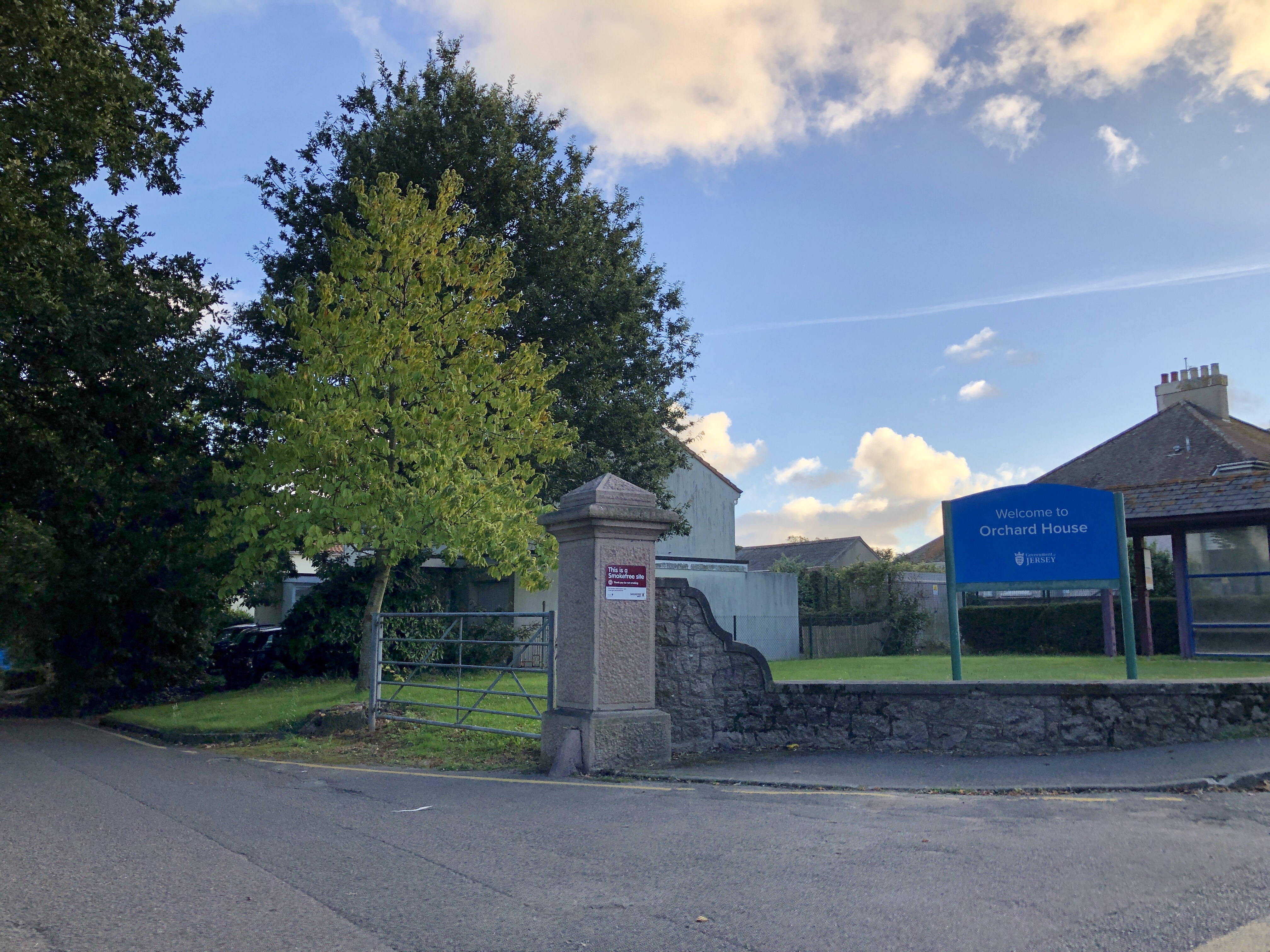
Pictured: The current mental health facility, Orchard House.
The idea of situating mental health facilities within the hospital aims to ensure there is parity of care for those suffering physical and mental ailments – one of the principles of the new Care Model.
There will be communal areas, with a design allowing staff “visibility of most of the ward” at all times, and a therapeutic open outdoor space that does not “offer opportunities for hiding, concealment or absconding” – the latter of which has previously been an issue for Orchard House.
Children and teens in distress, meanwhile, have sometimes been treated on children’s ward Robin Ward, with the number of patients held there in recent years ranging from five to 25. A 2018 Scrutiny report was highly critical of the move.
It is not clear whether a dedicated ‘safe place’/adolescent mental health unit will be provided – in line with calls from Scrutiny and the Children’s Commissioner – but plans state that the design of the Paediatric Ward will make “particular reference to vulnerable patients and those patients with complex mental health issues, particularly in the adolescent and young adult age group”.
Every ward in the hospital is also expected to have a dedicated bariatric room, which will double up as a ligature-proof “isolation room” for patients at risk of self-harm or requiring “secure care”.
As women may require different levels of input at different stages of pre-pregnancy, pregnancy, labour and post-birth, it’s hoped that all needs will be able to be met in a single location.
There will be two separate units: a consultant-led unit and a midwife-led one.
Birthing rooms within the midwife unit will be based on a stay throughout labour, delivery, and recovery, all of which should be “homely” with ensuite facilities. There will be a room specifically designated for mothers delivering stillborn babies, which will have a separate and discreet pathway and be situated close to a bereavement and counselling suite.
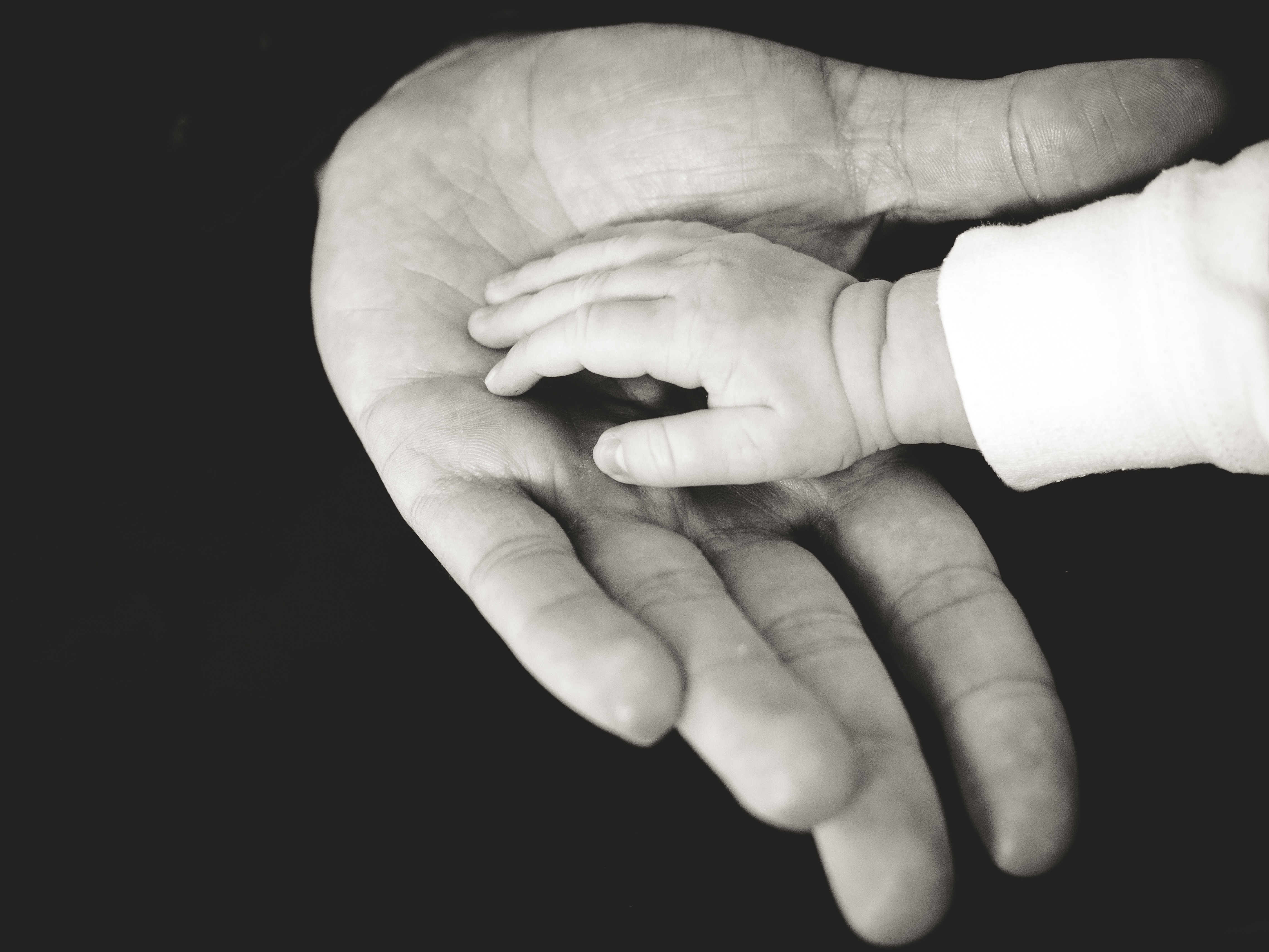
Pictured: There'll be a specialist area for mothers going through a traumatic birth.
Near maternity, there’ll be a Newborn Unit with a multi-cot nursery and single-cot rooms sized to allow mothers to sleep next to their special care babies. The facilities will be used flexibly, and may hold babies needing intensive care prior to an air lift transfer to the UK.
The Assisted Reproduction Unit, which currently sits at Overdale away from Jersey’s General Hospital, will be brought into the main hospital. It will be located within the private unit and share back-of-house areas.
What isn’t expected to be in the hospital is post-pregnancy services including the Pregnancy and Wellbeing Service, Vaginal Birth After Caesarean and post-natal mental health clinics. These are instead set to be delivered in community settings in line with the Jersey Care Model.
The JCM estimates that six operating theatres will be needed, but designers planning for around eight - one of which will be used for image-guided surgeries, one for opthamology and another for emergency and trauma.
All will be equipped with infrastructure to support keyhole surgery and robotics.
Here’s where things are set to become very different.
Outpatient services are currently based at Overdale, away from Jersey’s General Hospital. But, under the new Care Model, not all services will be making their way into the new hospital. Some will instead be provided “in the community” – although no definitive list of these has been made public (see below for what could move).
Reproductive services (as described above) and continence services (urology) are two examples of services currently at Overdale that will be provided in the new ‘outpatient module’.
Made up of a number of generic suites, it will also include specialist facilities for ENT, Audiology, Opthamology, Dermatology, Urology, Cardiology and Respiratory, Gynae, Breast, Fracture Clinic/Orthopaedics and a Medical Day Unit.
Mammography and gynae services will be grouped together to create a ‘Women’s Health’ cluster. Like oncology, some gynae services, however, will still be provided off-island by a ‘satellite clinic’ at Royal Marsden.
Trauma and orthopaedics are likely to permanently occupy the generic modules with access to a dedicated plaster room. They’ll also have direct access to imaging and radiology.
Dialysis stations will feature in the outpatient department zone, as well as an area to train up patients to undertake dialysis at home. It’s expected this will be situated on the ground floor for easy access, and that such patients will benefit from dedicated parking spaces.
A notable omission in the hospital specification document is any reference to a Dental Department.
Currently, dental care for primary school children and orthodontics treatment for children and young adults in full-time education is provided within the General Hospital.
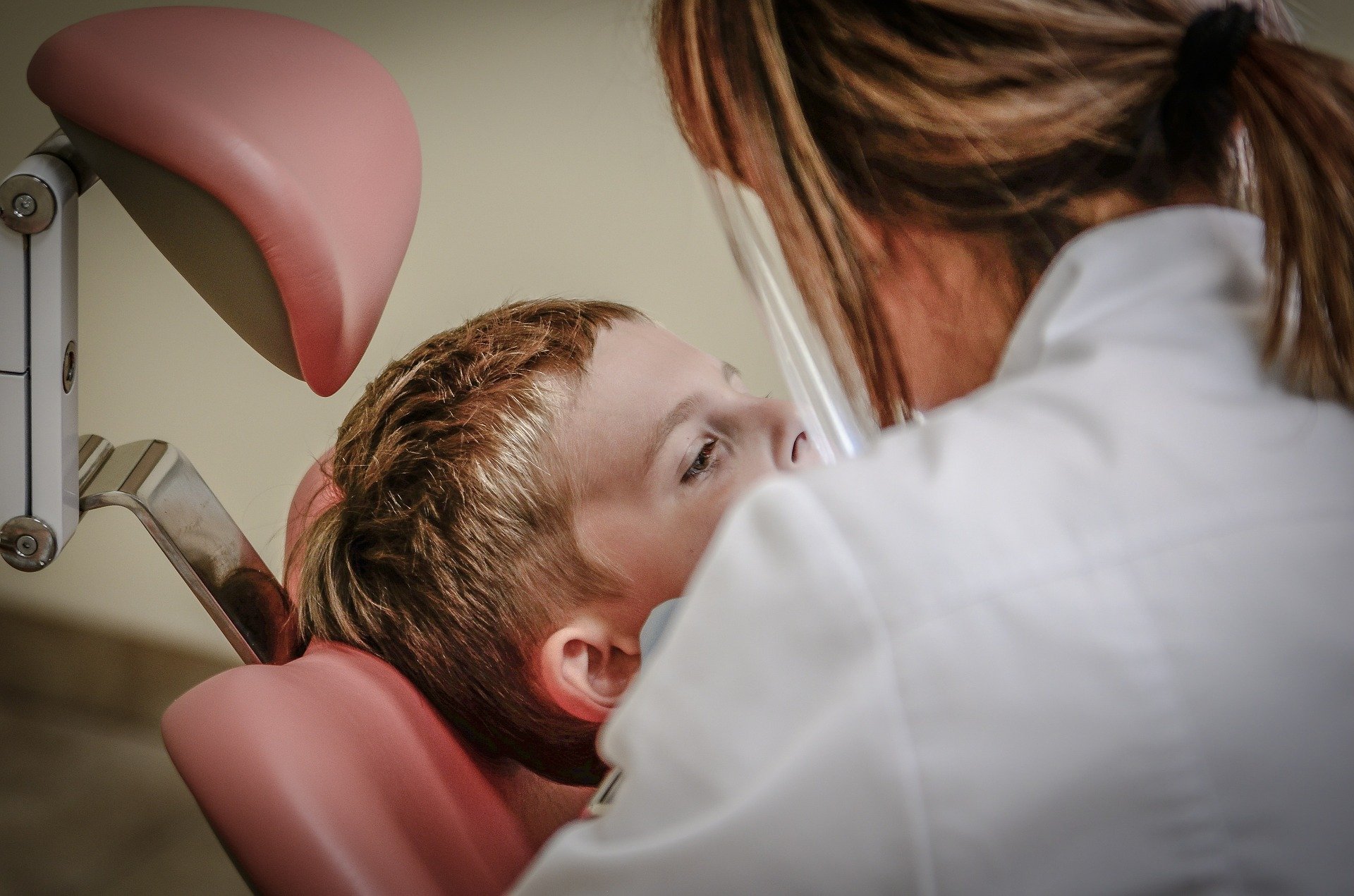
Pictured: There is no mention of a Dental Department.
The JCM doesn't set out any formal recommendations for the future of dentistry - which remains an independent service commissioned by Government, like GPs and Primary Care. All we know is that one of the Government's priorities set out at the beginning of their term was to reduce financial barriers to access to quality dental care, particularly among children.
Currently based at Overdale is the Pain Management Centre, which gives patient access to doctors, physios and psychologists as well as educational programmes, mindfulness practice and community gym sessions. There is no mention in the hospital specification document of a dedicated pain unit.
The Jersey Diabetes Service, which provides services ranging from foot care clinics to dietary education and counseling, also operates out of Overdale. There is no mention of a specific diabetes unit, although it is stated that care of women with diabetes during pregnancy will be provided in the Maternity Unit.
Pictured: Many services currently provided at outpatient facility Overdale will be put into the community.
Overdale is also the base of Jersey’s Neurology core, providing assessment, treatment and support to patients with conditions ranging from migraines to epilepsy, brain tumours or MS. There is no mention of a dedicated neurological hub.
Last year, Overdale’s Samarès Ward – a specialist rehabilitative ward, which provides care to a multitude of islanders, including those that have suffered strokes – moved into the General Hospital. The hospital specification document makes clear that rehabilitation in future will be delivered “as far as practicable, outside the hospital”, although there will be a rehabilitation gym on the hospital site.
The absence of references to Memory Services or Speech and Language therapy – services also provided at Overdale – may also suggest it will be delivered in the community in future.
It is equally unclear if the Child Development and Therapy Centre, which is based at Overdale’s William Knott building and underwent a £2.4m refurbishment in 2018, will be replaced like-for-like or have its services distributed into the community. Purpose-built with colourful sensory areas, it helps around 1,000 children every year with services including physio, occupational therapy and speech and language therapy.
What we do know is that, while the hospital is being built, those services should continue to be provided at the old Les Quennevais School, which is being repurposed. The Government has said this is a temporary solution.
The JCM hints that attempts will be made in future to keep long-term conditions like diabetes, COPD, cardiovascular disease and epilepsy outside acute settings, partially by increasing GPs “confidence” in managing them. It refers to Portsmouth and South East Hampshire’s ‘Super Six’ model for diabetes care as a model. Under the model, patients are seen exclusively by GPs unless they fall into one of six special categories. This was rolled out across 82 GP practices, accounting for 32,000 people in the region, and saw monthly diabetes referrals reduce to zero, reducing pressure on the health service.

Pictured: More diabetes services could be delivered in the community.
The JCM acknowledges, however, that Jersey’s non-acute workforce will have to be strengthened in order to deliver this change. Current projections suggest that demand for GP appointments will grow in Jersey by 25% by 2035.
It is also not clear if the Allan Lab – Jersey’s Maison Le Pape-based medical technology research hub – will be relocated to the main hospital building or the ‘Knowledge Centre’ destined for a field up the road, opposite the crematorium.
Also based at Maison Le Pape is the Alcohol and Drugs Service, which operates services ranging from needle exchange to the Help2Quit anti-smoking service. While the building is separate to the main hospital, it is considered a department of the hospital. It appears likely that this service could also be destined to move into the community.
The JCM had also expressed hopes that more bariatric care could be repatriated to Jersey, potentially through partnerships with Guernsey. Each ward will include a dedicated bariatric bed, although, as mentioned above, this may be used for those requiring mental health care.
Designers have been tasked with creating a sense of 'Jersey' in the hospital build, incorporating local plants and materials outside and inside.
There will be art in the entrance zone in order to "provide distraction to anxious patients and visitors, and be cognisant of the needs of certain groups, such as those with dementia”.
Murals will also be added to the inside, and artwork will tie in with existing views and landmarks to help to help patients' with their orientation. A detailed arts strategy will be drawn up.

Pictured: Murals are expected to feature in the building, whose inner style will be governed by an arts strategy taking into account local features, patient anxiety and impacts on individuals with dementia.
Daylight will be used as far as possible throughout the hospital and designers have been tasked with being mindful of ensuring there are no dramatic lighting changes between departments, unless medically necessary. This, it's hoped, will improve the wellbeing of both patients and staff.
Accessibility will be a key focus in the design, with all doors and lifts made wide enough for non-standard wheelchairs and bariatric patients.
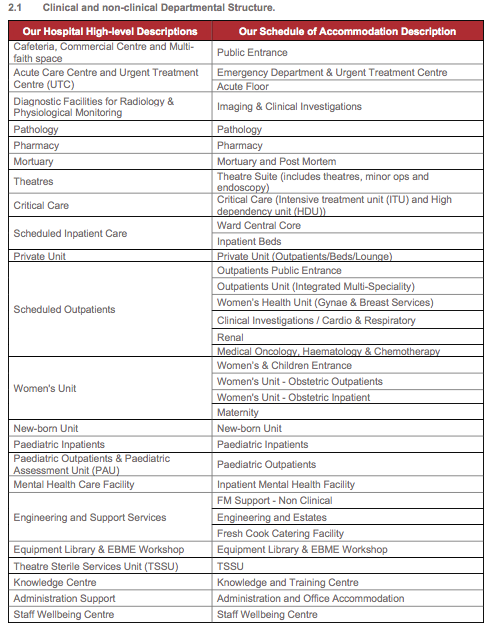
Comments
Comments on this story express the views of the commentator only, not Bailiwick Publishing. We are unable to guarantee the accuracy of any of those comments.